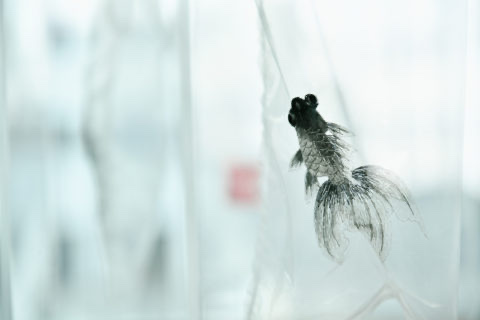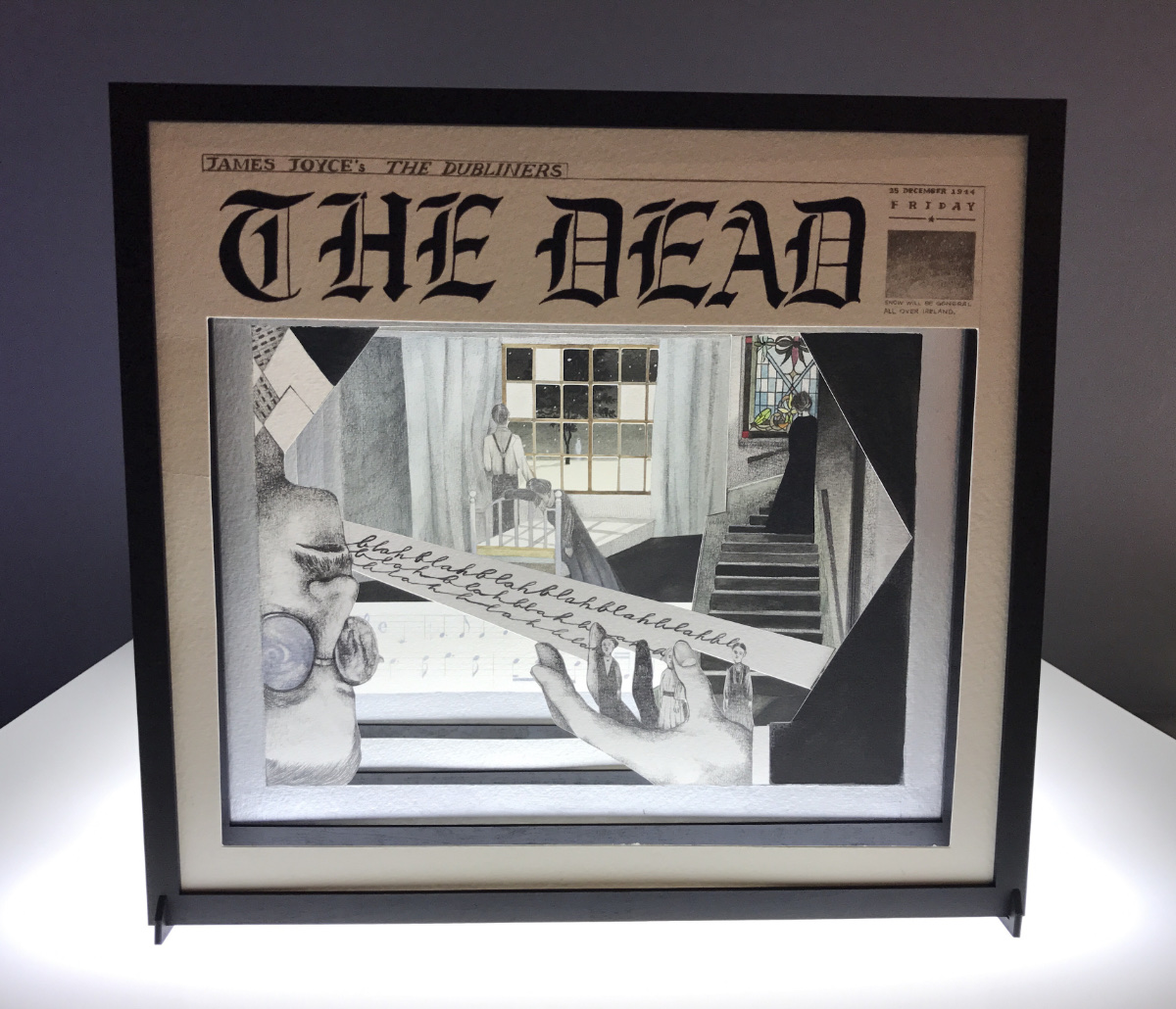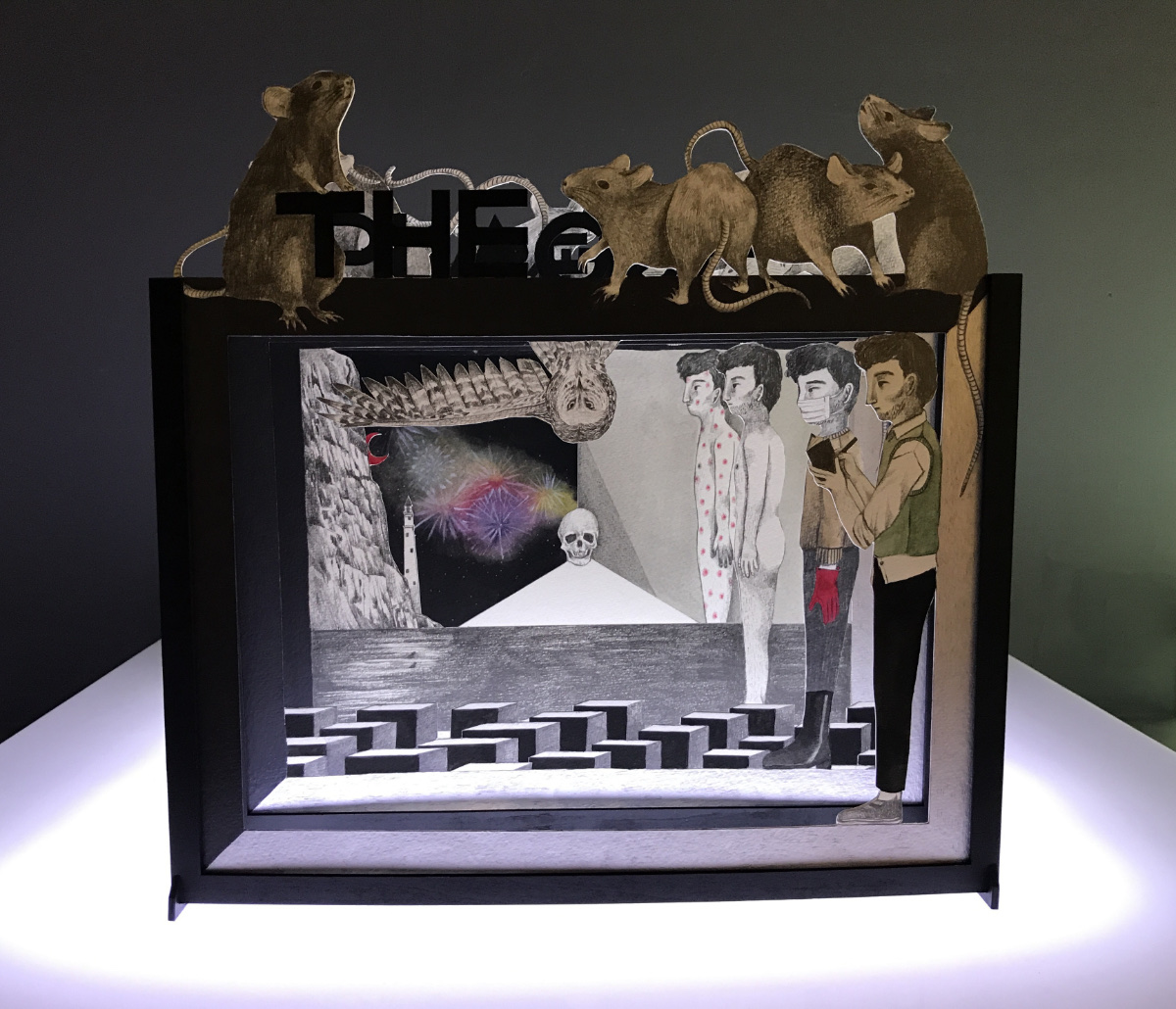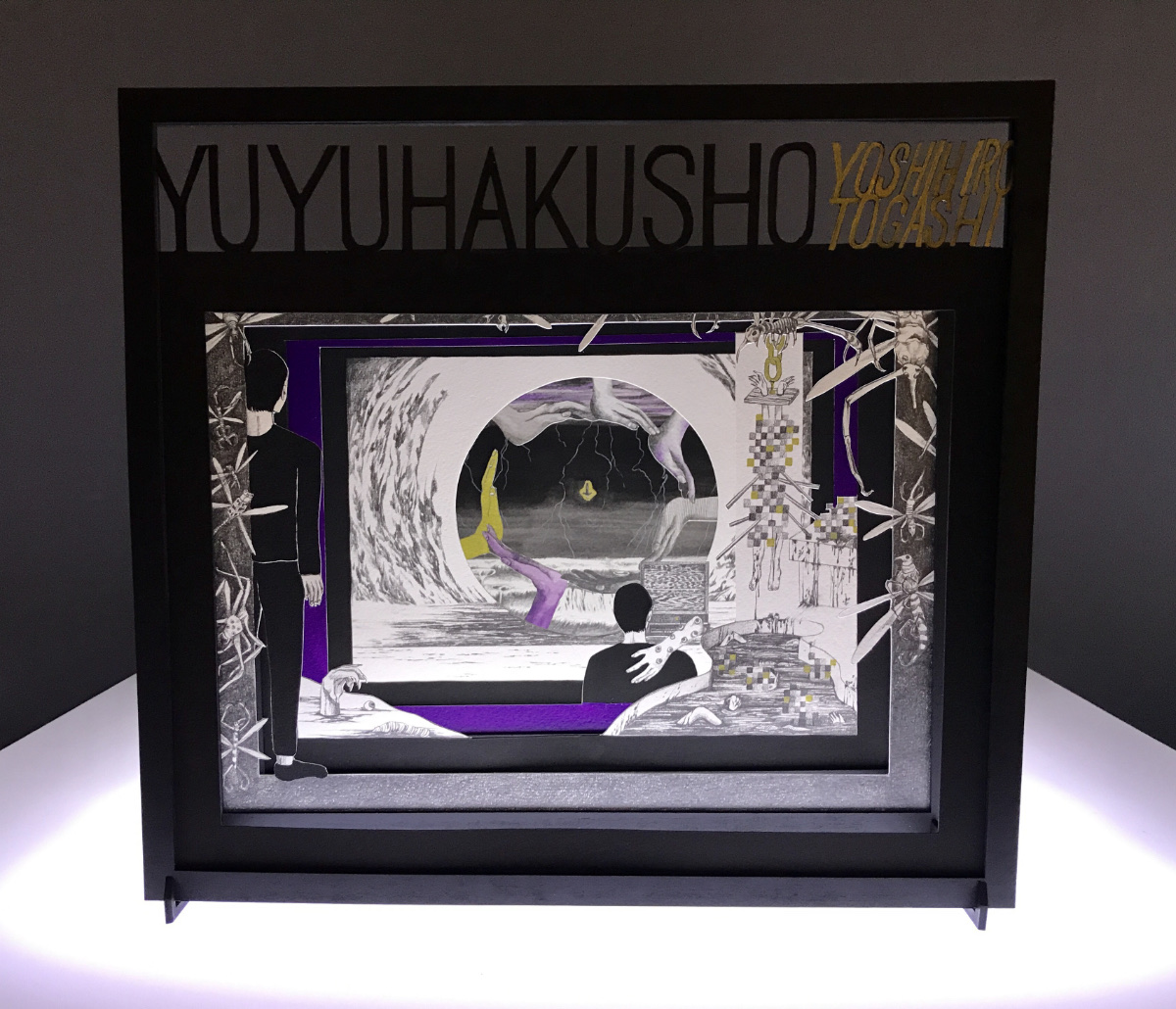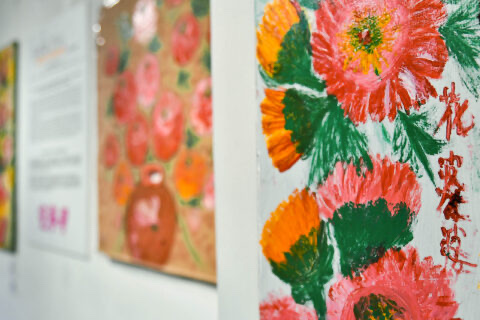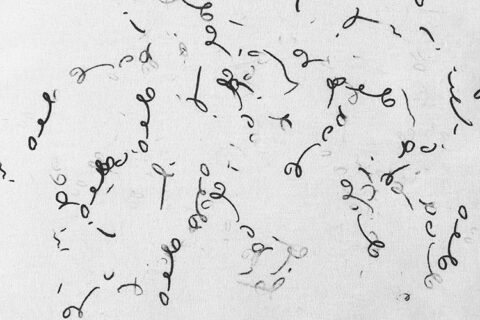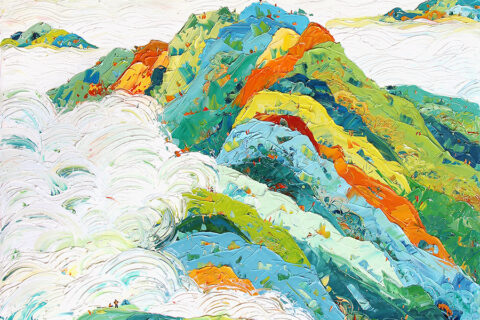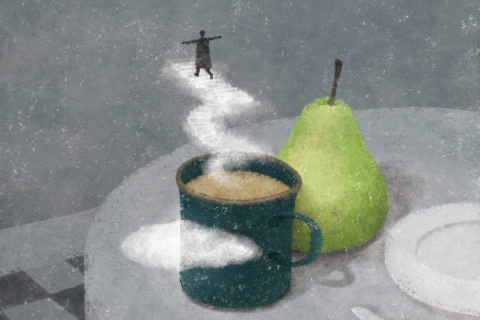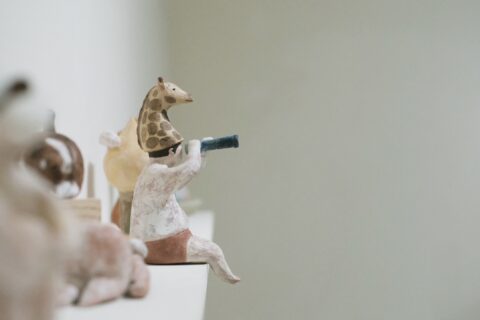一個生命的延續總賴以消耗另一個生命。
在《也許明天他們會為我們死》的展覽入口處,掛著一小包短小得大概只剩一厘米的鉛筆。鉛筆用生命來延續藝術家何倩彤的創作生命。
藝術家何倩彤愛用木顏色及鉛筆作畫。愛閱讀及文字,但文字有失效的時候,於是她棄掉文字,以圖畫去寫書。展覽《也許明天他們會為我們死》,是何倩彤根據七個讓她念念不忘的虛構世界中的死亡人物,製成七部立體書。更將他們的故事重寫一遍,是一場她內心跟虛構世界的聯繫,虛構都彷彿真實。
卡繆《鼠疫》中的塔魯;艾茵・蘭德《阿特拉斯聳聳肩》中的艾迪・威勒斯;阿蘭達蒂・洛伊《微物之神》中的維魯沙;喬伊斯《死者》中的麥可・費瑞; 馮內果《泰坦星的海妖》中的馬拉吉・坎斯坦特;富樫義博《幽遊白書》中的仙水忍;大江健三郎《換取的孩子》的塙吾良。生命中、人與人、人與物之間充滿不同的關係,這些都不盡是美滿甜蜜,當中也有著失效、荒謬、苦難甚至肢離破碎。不同的生命卻從這些失效、肢離破碎、荒謬、甚至死亡中獲得養份而延續下去。從七個在虛構世界中死亡的人物,可以看到真實世界的呈現。
在《也許明天他們會為我們死》展覽中,何倩彤為這七個書中死去的人物造了七本立體的隧道書,一層層的深入死去角色的故事中。那一道一道的立體裝置,好像將書中平面的角色具體化,虛構人物的故事,變得同樣真實。現場還為七個人物放置七組不同形狀的雕塑,它們豎立著如同紀念碑。就在七組紀念碑當中,觀眾閱讀著七個死亡故事。閱讀虛構的故事,都會為真實生活帶來養份。
何倩彤曾說:「我喜愛老實的書,不一定是作者有高潔的德行,或者受高度尊敬的作家。反而是那些血淋淋赤裸裸去道出事情,坦白地說故事最能打動我。」
The extension of one life always relies on the consumption of another.
Hung at the entrance of the exhibition titled Maybe They Will Die For Us Tomorrow is a bag containing short little pencils with only one centimeter left. These pencils have used their life to extend the creative life of Ho Sin Tung, an artist.
The artist Ho Sin Tung loves to use wooden color pencils and pencils for her drawings. Despite her love for reading and words, there are instances when words fail. Therefore, she has forgone words and used drawings instead to write her books. Maybe They Will Die For Us Tomorrow exhibits seven three-dimensional books that Ho created based on seven deceased persons in the fictional world which stay in her mind. She has even reconstructed their stories, which represent an attempt to connect her inner heart to the fictional world. What is fictitious seems almost real.
Jean Tarrou in The Plague by Albert Camus; Eddie Wilkerson in Atlas Shrugged by Ayn Rand; Velutha in The God of Small Things by Arundhati Roy; Michael Furey in The Dead by James Joyce; Malachi Constant in The Sirens of Titan by Kurt Vonnegut; Shinobu Sensui in Yuyu Hakusho by Yoshihiro Togashi; Goro Hanawa in The Changling by Kenzaburo Oe. Life abounds with a wide variety of relationships between human beings, as well as those between humans and objects. These relationships are not necessarily satisfactory and sweet. Among them there are failings, absurdities, sufferings or even bodies in pieces, from which, however, living things gain nutrients in order to live on. From these seven characters who die in the fictional world, one can see the revelation of the real world.
At the Maybe They Will Die For Us Tomorrow exhibition, Ho Sin Tung created seven three-dimensional tunnel books for these seven dead characters so as to dig deep, layer by layer, into their stories. Every three-dimensional installation seems to have turned two-dimensional characters in the books into concrete creations, and thus, their stories have become real at the same time. Furthermore, she has even created seven sculptures of various shapes for the seven characters. As they stand there, they resemble monuments, from which visitors can read seven stories about death. By reading fictitious stories, one can nourish their real life.
Ho Sin Tung once said, “I love honest books. The author need not necessarily have impeccable moral conduct nor be held in high regard. Rather, what moves me the most are those who are candid in their storytelling, and who can lay bare, in flesh and blood, what they want to say.”
